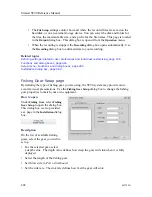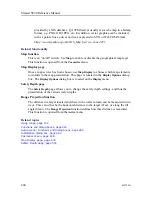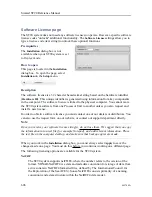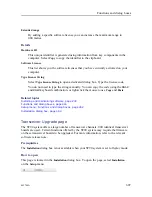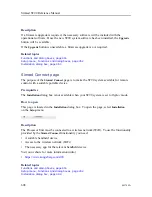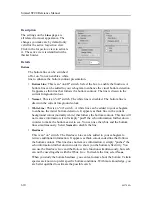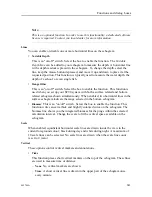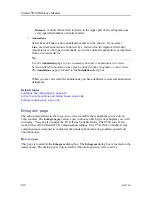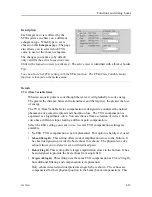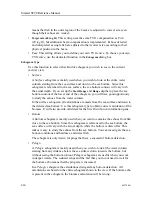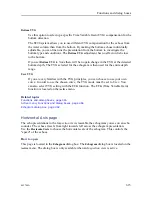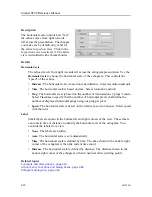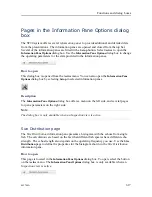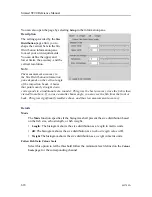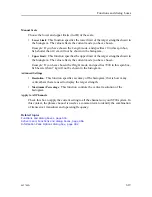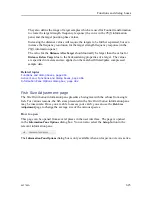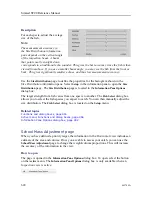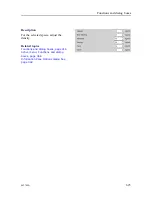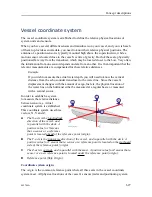
614
442704/A
means that fish in the outer region of the beam are adjusted to correct size even
though their echoes are weaker.
•
Target mix (40 log R)
: This setting uses the same TVG compensation as
Fish
(40 log R)
, but additional beam compensation is implemented. Echoes detected
and interpreted as single fish are adjusted to their correct size according to their
physical position in the beam.
•
User
: This setting allows you to define your own TVG curve. To choose your own
TVG curve, use the dedicated function in the
Echogram
dialog box.
Echogram Type
Use this function to select what kind of echogram you wish to see in the current
(active) view.
•
Surface
A
Surface
echogram is mainly used when you wish to look at the entire water
column starting from the sea surface and down to the sea bottom. Since this
echogram is referenced to the sea surface, the sea bottom contour will vary with
the actual depth. If you set up the
Start Range
and
Range
depths to place the sea
bottom contour at the lower end of the echogram, you will have good opportunity
to study the echoes from the water column.
In the surface echogram, all calculations are made from the sea surface and down to
the detected sea bottom. Use this echogram type to obtain correct calculation of the
biomass. It will also provide valid data for the
Size Distribution
information pane.
•
Bottom
A
Bottom
echogram is mainly used when you want to examine the echoes from fish
close to the sea bottom. Since this echogram is referenced to the sea bottom, the
sea surface will vary with the actual depth, while the bottom is drawn flat. This
makes it easy to study the echoes from the sea bottom. You can investigate the sea
bottom conditions and hardness, and detect fish.
The echogram is only drawn for pings that have a successful bottom detection.
•
Pelagic
A
Pelagic
echogram is mainly used when you wish to look at the water column
starting from any distance below the sea surface down towards the bottom, but
without seeing the bottom contour. Pelagic echograms are useful when you work
in deeper waters. The reduced range and the fact that you do not need to wait for
the bottom echo means that the ping rate is increased.
In a
Pelagic
echogram the calculations disregard any bottom detection. All
calculations are based on the entire echogram shown in the view. If the bottom echo
is present in the echogram, the biomass calculation will be wrong.
Simrad ST90 Reference Manual
Summary of Contents for Simrad ST90
Page 1: ...kongsberg com simrad Simrad ST90 REFERENCE MANUAL ...
Page 2: ......
Page 337: ...442704 A 335 Related topics Sonar views page 326 User interface ...
Page 413: ...442704 A 411 Related topics Menu system page 375 Display menu page 384 Menu system ...
Page 631: ...442704 A 629 Related topics Concept descriptions page 626 Concept descriptions ...
Page 687: ......
Page 688: ... 2021 Kongsberg Maritime ISBN 978 82 8066 211 8 ...
Page 689: ......
Page 690: ...Reference Manual Simrad ST90 ...



